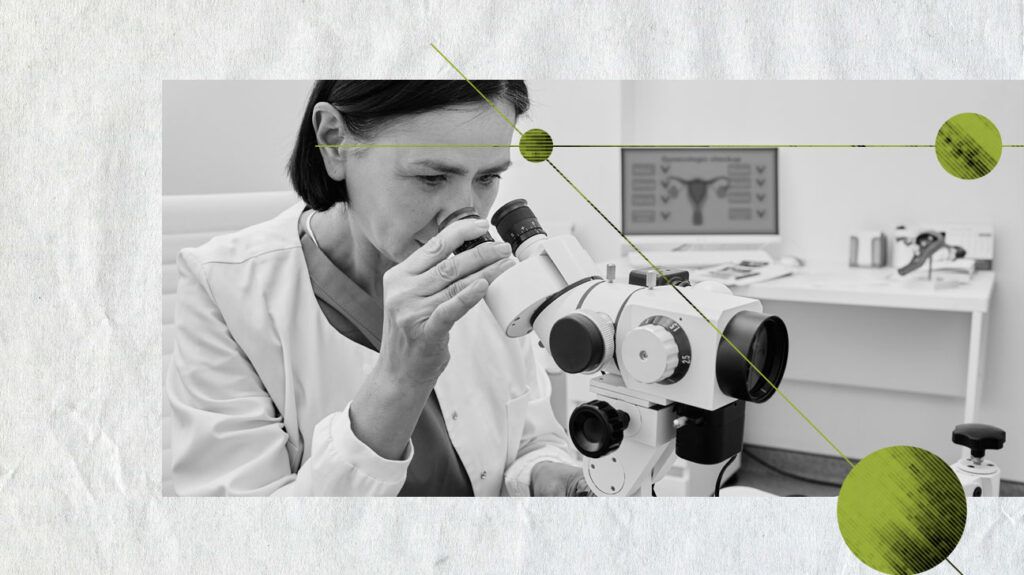Vulvar intraepithelial neoplasia (VIN) is a precancerous condition. If a person does not receive treatment for VIN, they may have an increased risk of developing vulvar cancer. Most people with VIN do not experience symptoms.
There are two types of VIN, and the treatment a healthcare professional recommends will depend on the type of VIN a person has.
This article discusses what VIN is in more detail, including types, symptoms, and causes.
It also looks at diagnosis, treatment, and prevention.
A note about sex and gender
Sex and gender exist on spectrums. This article will use the terms “male,” “female,” or both to refer to sex assigned at birth. Click here to learn more.

VIN is a precancerous condition that affects the squamous cells. These cells make up the middle and outer layers of the skin. When a person has VIN, they may notice lesions or patches of discoloration on the vulva, which may also feel itchy.
Doctors
VIN
Cancer resources
To discover more evidence-based information and resources for cancer, visit our dedicated hub.
There are two different types of VIN.
Usual type vulval intraepithelial neoplasia (uVIN)
Doctors associate uVIN with human papillomavirus (HPV). This type of VIN does not typically progress to vulvar squamous cell carcinoma (VSCC). However, if a person does not receive treatment within
Differentiated vulval intraepithelial neoplasia (dVIN)
dVIN is rarer than uVIN. People living with dVIN are likely to develop vulvar cancer, or more specifically VSCC, if they do not receive treatment. Doctors associate dVIN with inflammatory skin conditions including lichen sclerosus and lichen planus, not HPV.
When people do experience symptoms, they may include:
- itching that does not improve or go away
- an area of skin that is thicker and lighter than the surrounding skin
- a burning sensation, ranging from mild to severe
- flat or raised skin lesions
- patches of skin discoloration
VIN lesions can develop on any part of the vulva.
However, if a person has uVIN, lesions may occur on the labia majora where hair is present. Additionally, lesions may also develop on the labia minora where no hair is present, or toward the back of the labia, which doctors call the posterior fourchette.
dVIN lesions tend to appear on areas of the labia where there is no hair.
The causes of VIN are not entirely clear. However, the condition tends to appear more in
Other factors that can increase the risk of VIN include:
- exposure to HPV
- smoking
- living with a comprised immune system, due to autoimmune diseases and HIV, for example
- taking immunosuppressive medications after an organ transplant
- having a condition that increases the risk of VIN, such as lichen sclerosus
During a VIN diagnosis, a doctor will discuss any visible symptoms they may notice on the vulva and go over next steps.
If they think a person has VIN, they will examine the vulva further using colposcopy to get a clearer view of the lesions. In addition to this, they may also examine the anus, cervix, and vagina. A colposcopy may help a doctor rule out other conditions that have similar symptoms.
After the colposcopy, the doctor may request a biopsy, in which they take a skin sample to send to a laboratory. A pathologist will then examine the sample under a microscope. They will look for specific changes to the cells that either indicate a person has VIN or that the cells are becoming cancerous.
There are several treatment options for VIN and each one depends on different factors, such as symptoms and cancer risk.
Watchful waiting or monitoring
Benign and mild lesions may resolve on their own without treatment. In these instances, a doctor may rather monitor the symptoms, instead of removing the lesions and potentially exposing a person to further health risks during surgery, for example.
Removal of lesions
The types of surgery doctors use to remove lesions
However, laser surgery may be another option, in particular CO2 laser ablation.
Topical treatments
If there are reasons a person cannot undergo surgery, a topical treatment
One topical chemotherapy for VIN is fluorouracil (5-FU). A person directly applies this ointment to the vulva.
Another option is imiquimod. This cream works by boosting the immune system to help clear the lesions. It is not a form of chemotherapy.
Other treatment options
Cidofovir is a type of antiviral medication that can help reduce the amount of cells that HPV has affected.
Photodynamic therapy can also reduce these cells by using light-sensitive medication and a light source to trigger cell death.
The number of young females with VIN
The Centers for Disease Control and Prevention (CDC) recommend that children should receive two doses of the HPV vaccine when they are
VIN is a type of precancerous skin condition that develops on a person’s vulva. The two types of VIN include uVIN and dVIN.
If a person has HPV, their risk of uVIN increases as the two conditions are closely linked. HPV is not linked with dVIN. However, certain other conditions, such as lichen sclerosus, increase the risk of developing dVIN.
Typical VIN symptoms are lesions that feel itchy or burn. They may also appear discolored in comparison with the rest of the skin. Most people, however, do not experience any symptoms at all.
Treatment for VIN depends on the severity of symptoms and cancer risk. If lesions are mild, watchful waiting may be the best course of action. In instances where lesions have not gone away on their own, surgery and laser ablation may be more suitable treatment options.
